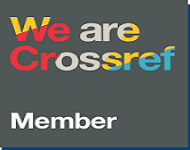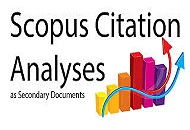Development of a Drill-and-Practice Chatbot for Enhancing English Pronunciation through Interactive Dialogue Exercises
DOI:
https://doi.org/10.33394/jp.v12i4.17760Keywords:
Chatbot, Drill and Practice, Speaking Skill, PronunciationAbstract
This study aims to implement a drill and practice-based chatbot to improve English speaking skills, particularly in the aspect of pronunciation. The research employed a mixed-methods approach by combining the Research and Development (ADDIE) model with a quasi-experimental design using a pretest-posttest control group pattern. The participants consisted of 76 eighth-grade students from SMPN 5 Cirebon, divided into experimental and control groups. The instruments used included a pronunciation assessment rubric based on the Cambridge English Linguaskill Speaking Global Assessment Criteria, observation sheets, and student perception questionnaires. Data analysis was conducted through normality tests, the Wilcoxon Signed Rank Test, the Mann-Whitney U Test, and N-Gain calculation, complemented by qualitative analysis from observations and questionnaires. The findings revealed that the use of a drill and practice-based chatbot had a positive impact on improving students' pronunciation skills, although the improvement achieved remained merely in the low category, with an N-Gain score of 0.25. The chatbot was proven to provide broader, more flexible, and personalized practice opportunities for students, as well as facilitate instant feedback that is difficult to obtain in conventional learning. These results indicate that chatbots can serve as an effective supplementary medium in English language learning, particularly for practicing pronunciation both independently and in integration with classroom learning, suggesting the potential for further development and integration of chatbot technology in language education.
References
Abdolhosseinzadeh Amini, M., Kruger, C. G., & Nel, C. (2024). Self-regulated EFL learning through productive feedback in Iranian private language institutes: a case for sustainable lifelong learning outcomes. Discover Education, 3(1). https://doi.org/10.1007/s44217-024-00374-6
Abimanto, D., & Sumarsono, W. (2024). Improving English Pronunciation with AI Speech-Recognition Technology. Acitya: Journal of Teaching and Education, 6(1), 146–156. https://doi.org/10.30650/ajte.v6i1.3810
Alaraj, M. M. (2024). Effective Strategies to Overcome EFL Speaking Difficulties. International Journal of Social Science and Human Research, 07(10), 7467–7474. https://doi.org/10.47191/ijsshr/v7-i10-14
Alfira, N., Rum, E. P., & Azis, A. (2024). the Effect of Drilling Communication Technique in Teaching Students’ Pronounciation At Sma Negeri 19 Gowa. English Language Teaching Methodology, 4(2), 216–225. https://doi.org/10.56983/eltm.v4i2.529
Alia Sa’ad Eldin AbuSahyon, Abdelhadi Alzyoud, Omar Alshorman, B. A.-A. (2025). AI-driven chatbots in second language education: A systematic review of their efficacy and pedagogical implications. Ampersand, 14(May), 100224. https://doi.org/10.1016/j.amper.2025.100224
Brown, H. D. (2006). PRINCIPLES of LANGUAGE LEARNING AND TEACHING. In The Ultimate FE Lecturer’s Handbook. https://doi.org/10.1017/cbo9781139062398.015
Dennis, N. K. (2024). Using AI-Powered Speech Recognition Technology to Improve English Pronunciation and Speaking Skills. IAFOR Journal of Education, 12(2), 107–126. https://doi.org/10.22492/ije.12.2.05
Ding, D., & Yusof, A. M. B. (2025). Investigating the role of AI-powered conversation bots in enhancing L2 speaking skills and reducing speaking anxiety : a mixed methods study. Humanities and Social Sciences Communications, 2025, 1–16.
Du, J., & Daniel, B. K. (2024). Transforming language education: A systematic review of AI-powered chatbots for English as a foreign language speaking practice. Computers and Education: Artificial Intelligence, 6(March), 100230. https://doi.org/10.1016/j.caeai.2024.100230
Fachrunnisa, N., & Nuraeni, N. (2022). Speaking Interaction Problems Among Indonesian Efl Students. ETERNAL (English, Teaching, Learning, and Research Journal), 8(1), 108–120. https://doi.org/10.24252/eternal.v81.2022.a7
Fathi, J., Rahimi, M., & Derakhshan, A. (2024). Improving EFL learners’ speaking skills and willingness to communicate via artificial intelligence-mediated interactions. System, 121(January), 103254. https://doi.org/10.1016/j.system.2024.103254
Hake, R. R. (1998). Interactive-engagement versus traditional methods: A six-thousand-student survey of mechanics test data for introductory physics courses. American Journal of Physics, 66(1), 64–74. https://doi.org/10.1119/1.18809
Harahap, S. H., Aprilia, M., & Lubis, N. A. (2024). Pentingnya Menguasai Kemampuan Komunikasi Lisan Untuk Anak. IJEDR: Indonesian Journal of Education and Development Research, 2(1), 375–378. https://doi.org/10.57235/ijedr.v2i1.1780
Harmer, J. (2015). The Practice of English Language Teaching. In ELT Journal (Vol. 57, Issue 4, pp. 401–405). https://doi.org/10.1093/elt/57.4.401
Hidayat, M. T. (2024). Effectiveness of AI-Based Personalised Reading Platforms in Enhancing Reading Comprehension. Journal of Learning for Development, 11(1), 115–125. https://doi.org/10.56059/jl4d.v11i1.955
Hoang, N. T., Ngoc Han, D., & Le, D. H. (2023). Exploring Chatbot AI in improving vocational students’ English pronunciation. AsiaCALL Online Journal, 14(2), 140–155. https://doi.org/10.54855/acoj.231429
Horwitz, E., Horwitz, M., & Cope, J. (1986). Foreign language classroom anxiety. The Modern Language Journal, 70(2), 125–132.
Huang, W., Hew, K. F., & Fryer, L. K. (2020). Chatbots for language learning—Are they really useful? A systematic review of chatbot-supported language learning. Journal of Computer Assisted Learning, 38(1), 237–257. https://doi.org/10.1111/jcal.12610
Kim, H. S., Cha, Y., & Kim, N. Y. (2021). Effects of ai chatbots on efl students’ communication skills. Korean Journal of English Language and Linguistics, 2021(21), 712–734. https://doi.org/10.15738/kjell.21..202108.712
Klímová, B., & Ibna Seraj, P. M. (2023). The use of chatbots in university EFL settings: Research trends and pedagogical implications. Frontiers in Psychology, 14(March), 1–7. https://doi.org/10.3389/fpsyg.2023.1131506
Koç, F. S., & Savaş, P. (2024). The use of artificially intelligent chatbots in English language learning: A systematic meta-synthesis study of articles published between 2010 and 2024. ReCALL, 37, 4–21. https://doi.org/10.1017/S0958344024000168
Kralova, Z., & Tirpakova, A. (2019). Nonnative EFL Teachers’ Speaking Anxiety: Post-Communist Country Context. SAGE Open, 9(2). https://doi.org/10.1177/2158244019846698
Management, D., & Resource, L. (2020). Linguaskill Speaking Global Assessment Criteria Linguaskill Speaking Phonological Descriptors for part 2 ( read-aloud ). https://www.cambridgeenglish.org/Images/605504-linguaskill-speaking-assessment-criteria.pdf
Suardika, I. K., Arihi, L. O. S., Hadara, A., Hasniah, H., & Ningsih, T. Z. (2023). The Use of Oral Presentation Techniques to Improve Communication Skills in Social Studies Learning. Ta’dib, 26(2), 303. https://doi.org/10.31958/jt.v26i2.9023
Vančová, H. (2023). AI and AI-powered tools for pronunciation training. Journal of Language and Cultural Education, 11(3), 12–24. https://doi.org/10.2478/jolace-2023-0022
Wu, C. H., Lam, H. Y., Kong, A., & Wong, W. L. H. (2023). The design and evaluation of a digital learning-based English chatbot as an online self-learning method. International Journal of Engineering Business Management, 15, 1–22. https://doi.org/10.1177/18479790231176372
Xodabande, I., Shiri, S., & Zohrabi, M. (2025). Exploring the impacts of an AI-driven instructional intervention on Iranian EFL learners’ pronunciation skill development. Discover Education, 4(1). https://doi.org/10.1007/s44217-025-00782-2
Živković, S. (2014). The importance of oral presentations for university students. Mediterranean Journal of Social Sciences, 5(19), 468–475. https://doi.org/10.5901/mjss.2014.v5n19p468
Published
How to Cite
Issue
Section
Citation Check
License
Copyright (c) 2025 The Author(s)

This work is licensed under a Creative Commons Attribution-ShareAlike 4.0 International License.
License and Publishing Agreement
In submitting the manuscript to the journal, the authors certify that:
- They are authorized by their co-authors to enter into these arrangements.
- The work described has not been formally published before, except in the form of an abstract or as part of a published lecture, review, thesis, or overlay journal.
- That it is not under consideration for publication elsewhere,
- That its publication has been approved by all the author(s) and by the responsible authorities tacitly or explicitly of the institutes where the work has been carried out.
- They secure the right to reproduce any material that has already been published or copyrighted elsewhere.
- They agree to the following license and publishing agreement.
Copyright
Authors who publish with Jurnal Paedagogy agree to the following terms:
- Authors retain copyright and grant the journal right of first publication with the work simultaneously licensed under a Creative Commons Attribution License (CC BY-SA 4.0) that allows others to share the work with an acknowledgment of the work's authorship and initial publication in this journal.
- Authors are able to enter into separate, additional contractual arrangements for the non-exclusive distribution of the journal's published version of the work (e.g., post it to an institutional repository or publish it in a book), with an acknowledgment of its initial publication in this journal.
- Authors are permitted and encouraged to post their work online (e.g., in institutional repositories or on their website) prior to and during the submission process, as it can lead to productive exchanges, as well as earlier and greater citation of published work.
Licensing for Data Publication
-
Open Data Commons Attribution License, http://www.opendatacommons.org/licenses/by/1.0/ (default)






